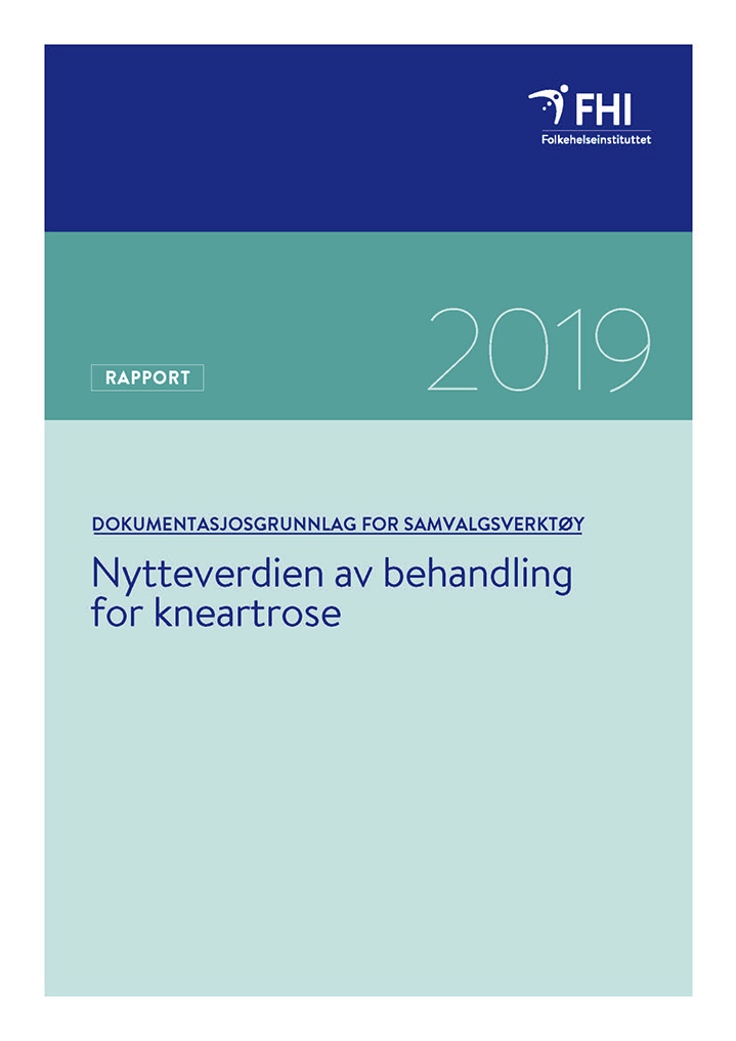Effectiveness of treatment for knee osteoarthritis: evidence base for shared decision making
Mapping review
|Published
The Centre for shared-decision making at The University Hospital of North Norway (UNN) asked the Norwegian Institute of Public Health to find and summarize key findings from systematic reviews about relevant treatment options to ease the symptoms in patients with arthritis in the knee.
Key message
Arthritis in the knee can make the joint stiff and painful. Activities of daily living such as doing the dishes or tying the shoe laces can become troublesome. Even though there is no cure for arthritis, there are treatments to ease the pain and make movement easier.
The Centre for shared-decision making at The University Hospital of North Norway (UNN) asked the Norwegian Institute of Public Health to find and summarize key findings from systematic reviews about relevant treatment options to ease the symptoms in patients with arthritis in the knee.
We found seven relevant systematic reviews about the effectiveness of:
- Exercise
- Self-management education programme
- Physical aids such as; Braces and orthoses
- Surgery such as; Osteotomy and arthoplasty
- Paracetamol
We made summary of findings tables and plain language sentences to summarize the results. Bottom line for the main outcome pain is:
- Exercise moderately reduces pain
- Self-management education programme may give little or no difference in pain
- Physical aids such as; Braces and orthoses probably give little or no difference in pain
- It is uncertain if unicompartmental knee arthroplasty is superior to total knee arthroplasty in pain
- Paracetamol minimally reduces pain


